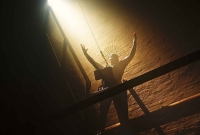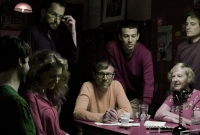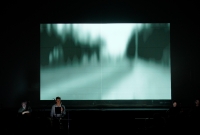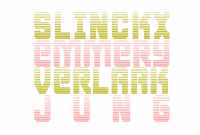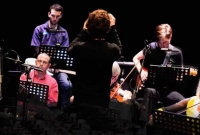FULL TEXT: ON THE EDITION-S WEBSITE
With Don Giovanni through the underworld of opera
A captivating journey into the underworld of opera history awaits when Simon Steen-Andersen's opera, 'Don Giovanni's Inferno', receives its Danish premiere.
- April 2024
The performance is based on the iconic scene from Mozart's Don Giovanni, where the main character is sent down to hell, and Simon Steen-Andersen unfolds an infernal staging that samples 400 years of opera with site-specific and cinematic elements. Every word and every note is found in existing opera scores, the characters move in and out of videos and live performance and into the darkest corners of the opera house. We asked the composer to tell us about the work, the process and some of the ideas behind it.
How would you describe your opera 'Don Giovanni's Inferno'?
"The concept is an extended staging, where I don't just stage one opera, but a large part of opera history seen from a certain perspective. The staging is site-specific based on the opera house where the performance takes place, which is featured in video recordings as a virtual stage set. In this way, I try to create an experience of moving around the building we are in and using the entire opera house as a stage.”
"I use the scene where Don Giovanni descends into hell as the perfect starting point for a story in a surreal and twisted universe, and the narrative of the opera proceeds in two parallel tracks: On the one hand, we follow Mozart's character Don Giovanni through opera hell, where he meets all the damned and demonic characters from the classical opera repertoire. At the same time, there is a kind of double interpretation, where the narrative can also be understood as the opera singer's nightmare, as he lies unconscious after hitting his head on the way down the stage trapdoor and is haunted by memories from a long career in opera. In both cases, Don Giovanni and his jump into the trapdoor or into Hell is the perfect setup to create this surreal world, where the entire repertoire is intertwined.”
What is your relation to the history of opera, and why is it interesting for you to use the existing operas as material?
"I'm not the typical opera composer or opera fan for that matter, but I think it is a really exciting material to take on as an outsider, and my approach to it is the same as to all the material I've worked with in the past several years – material from archives or found on locations. What they all have in common is that they are found objects that already have a place in the world and that people automatically have certain expectations to.”
How did you work with the scores and how do they intertwine?
“I always work with all the different dimensions in parallel and let my research within one dimension influence my work in the others. My work with the project has been ongoing since the first idea arose approximately seven years ago; Defining the whole concept, finding references and moments in the repertoire that could be used, and defining how the opera house and the scenic elements could be included. At the same time, I have done a lot of research about different representations of hell or the underworld, and how the balancing act with the church's view has affected the way the composers and librettists have formed their works. I've also delved into things that had nothing to do with opera, like Dante's Divine Comedy and Hieronymus Bosch's paintings with his amazing fantasies of the underworld.
At some point I started to condense it. Started to find out what demonic and damned characters I could draw upon, and that's how I came up with Don Giovanni and my opera devil, who is called Polystofeles. Poly because he is a composite character mixed from 19 different Mephistopheles, Plutos, demons and personified devils from the entire repertoire from 1600 to 1940. There is not a single word or note in the opera that is not found in an existing score, so it's a complex puzzle. I have created a basic structure that plays against what Don Giovanni might say based on phrases from his original character. With the devil, I have worked with single words and have more or less been able to speak freely, but in a very artificial operatic language, and in German, Italian, French and Russian - often in one and the same sentence. Based on that material, I have created a narrative where the characters can meet each other across their respective operas, and where at the same time there is a new metanarrative with the fainted opera singer, which reflects back on the entire history of opera and the genre."
